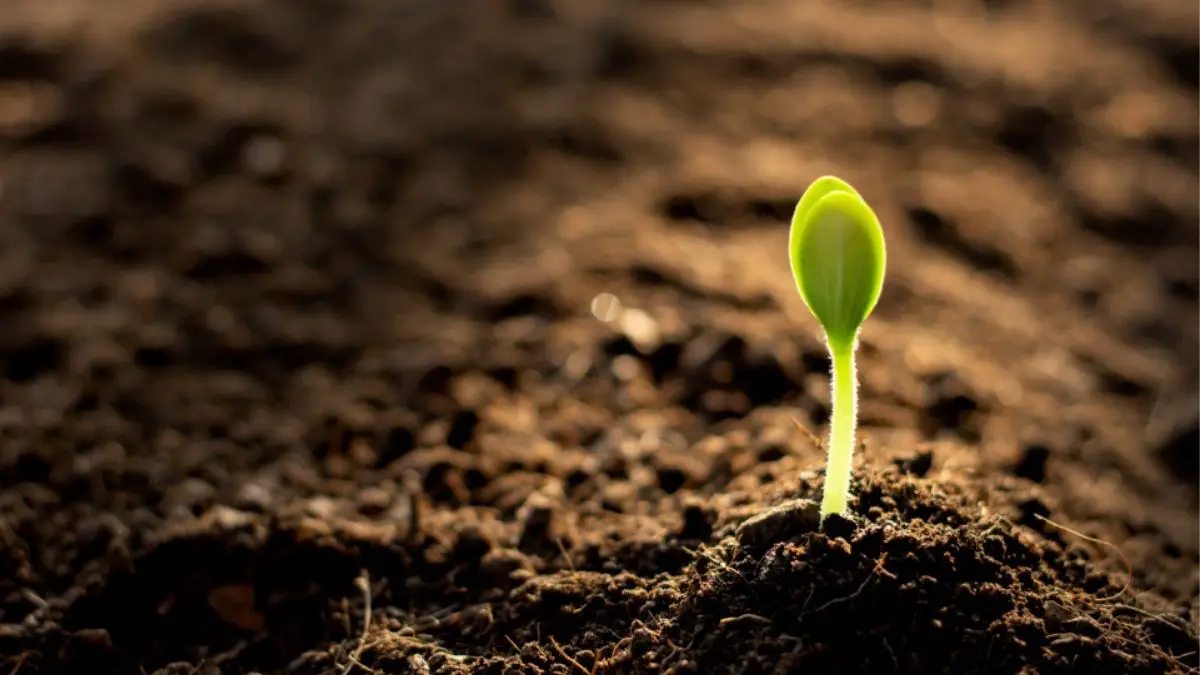Organic pH Up and Down for Plant Growth: Tips for you!

Whatever the technique of plantation is, maintenance of pH remains the primary factor for the success of your harvest. Deviation of pH level might lead to insufficient nutritional absorption in your plants causing severe problems. If you are looking for tricks about the best organic pH up and down for plants, then your cursor brought you to the right article!
- Did you know? A pH imbalance directly affects the absorption of nutrients and insufficient absorption can lead to stunted growth!
Here we’re going to tell you all about the best organic pH up and down techniques for both soil and hydroponics! So, read the whole article because here we’re going to burst many myths also!
What Are the Signs of Low pH in Plants?
For those who don’t know about pH, it is the universal parameter to judge the extent of acidity or alkalinity of a solution. The question is, how can acidity and basicity affect a plant’s growth? It won’t be wrong to say that a plant might die due to the acid-base imbalance. This is because pH is the one responsible for the maximum absorption of nutrients for survival.
So, don’t always blame pests for your plant’s stunted growth. It might be due to the acid-base imbalance in the soil/water! Following are some of the signs of high and low pH in plants:
- Did you know? pH imbalance can lead to plant poisoning! Low levels can produce manganese which can lead to increased toxicity levels.
- A relatively low pH level also liberates the nutrient “Aluminum.” This can cause stunted growth in plants. Moreover, it can also disturb the uptake of nutrients.
- Molybdenum is an essential nutrient that is used as a catalyst by numerous enzymes. When the pH level is too high, Molybdenum can accumulate in toxic quantities in plants. A high level also causes tip death of new leaves.
- Imbalance can also lead to stunted growth and leaf necrosis. The symptoms of necrosis include rots, leaf spots, scabs, anthracnose, and canker.
- High basicity might also lead to a defect called “Leaf Chlorosis.” It is caused due to lack of chlorophyll that ultimately turns the leaf yellow in color.
- Other signs of pH imbalance include twisted leaves, leaf tip burn, and brown spots on leaves.
What is the Suitable pH Range for Maximum Growth of Plants?
If you are adding fertilizers, water, and all other important nutrients for plant growth and still your efforts are going in vain, then pH might be the one responsible! A pH scale consists of values from 0-14. 7 is the neutral state and the border that differentiates acidic and alkaline pH. If a scale shows pH in the range 0-7, then it is said to be acidic. On the contrary, a pH from 7-14 is basic. To balance it we can use different organic pH up and down methods.
Plants usually show a maximum growth rate in a mildly acidic environment. The optimum pH range for plants is 5.5-7. However, some of the plant’s pH might differ from the given range. An acidic environment provides them with easy access to all of the important nutrients. Moreover, it also permits the maximum utilization of some fertilizers which work best in an acidic environment. The acidic environment also boosts up nitrogen fixation. Hence, there are many factors associated with pH disturbances.
Role of Organic pH Up and Down in Plant’s Growth
In order to maintain the desired pH, here we’ll discuss with you the best organic pH up and down techniques and will also answer the question “How to adjust pH when growing organic plant.” So, let’s dig into further details,
What Is a Natural pH Up? How to Raise pH Organically? Know Now!
First of all, you must know what your plants need. Based on the above-mentioned signs of pH imbalance, you’ll decide whether to go for pH up or not! You need to be cautious as too low pH might lead to the increased absorption of metals that can cause plant poisoning. However, if your plant doesn’t need it, then the following are the ways that will tell you how to raise ph in water for plants organically,
Use of Limestone – The easiest way to increase your soil pH is by using limestone as it is richly composed of calcium. The quantity to be used is entirely based on your soil’s need. Some professionals also recommend dolomitic limestone as it is rich in both Magnesium and Calcium. However, such soils that are already are rich in Magnesium shouldn’t be given the combination.
- For Sandy soils, you can use 2 pounds of limestone per 100 sq. ft.
Make sure you don’t add an excessive amount of limestone as it might burn the plants.
Oyster Shell Limes – they are composed of approximately 39% calcium which can help you adjust the pH by increasing calcium level. Make sure you use an adequate amount of oyster shell limes to avoid nutritional imbalance.
- You can use 2-4 tablespoons/ plant
If you’re looking for “how to raise soil pH without lime” then check out the methods listed below.
Baking Soda – Even if your question is “How to raise pH in water for plant,” seems like you’ve found the answer. For both organic pH up and natural pH up for water, baking soda is one of the easiest and cheapest ways to increase the pH level.
A plus point of using baking soda is that it rarely shows any harsh results on plants. Moreover, it is also faster than other organic pH-up techniques. You can mix it in water and use the mixture to increase the pH. However, make sure you don’t add too much as it would cause an imbalance.
Use of Egg Shells – It might be unusual for you but yes eggshells can be used as organic pH up and down. This is because they are entirely composed of calcium which can help exactly like lime. However, they won’t be as effective as lime but can be a great source of raising pH.
- You can use 1-2 pounds of eggshells per square foot based on correct soil analysis.
Use of Wood Ash – If your question is “How to rise pH in soil fast” then wood ash can help you do that! But all advantages can’t be present in a single deal, right? The only drawback here is that it doesn’t show long-lasting effects. Moreover, make sure you don’t use it on those plants which prefer acidic soil. Use dry ashes and plan periodic applications. Be patient and avoid any hurry!
All the natural pH-up techniques mentioned above must be used after the correct soil analysis. For example, if the Mg content is low then you can use the dolomite lime but if it isn’t then you must avoid using it. The best of all is “limestone” because of its long-lasting effects.
Most of the above-mentioned products were organic in nature. However, commercial products are also available to raise the pH. You should also try “earth juice pH up.” It is a natural pH up that is composed of water-soluble crystals which help in increasing the pH. Moreover, it is suitable for usage in both hydroponics and soil.
Natural pH Down for Plants: Methods You Must Try!
Just like humans, plants also have specified ranges of pH in which their metabolism can operate easily. Sometimes, the acid-base imbalance makes the environment highly alkaline that interferes with their optimal growth. The majority of the plants require an acidic environment to function. So, if your soil is way too acidic, then without wasting any time you must try the following organic pH up and down methods so that your plant doesn’t suffer from nutritional deficiency. Let’s dive into further details,
Compost Tea – You can also use compost tea to raise the pH. What you need to do is take some gallons of water and expose it to the sun to release chlorine. Now, use 1-2 cups of well-decomposed compost per a gallon of water. Now stir the mixture for two straight days and then strain the liquid. Pour the liquid in a watering can and enjoy the natural pH down for soil.
Usage of Vinegar – When it comes to organic gardening, you can also try vinegar for pH balance. This is because vinegar is a carboxylic acid (a diluted form of acetic acid) by nature so when you add it to the soil it lowers the pH automatically. On the contrary, there are several reasons for not using vinegar too! This is because vinegar only changes the pH of the water and does not affect the mineral portion. So, when you resume the usage of normal water pH ultimately increases.
Sulfur – This nutrient is used by a number of gardeners because it helps in increasing the acidity of the soil. It is advised to use this particularly when there is high calcium deposition. What happens is, sulfur uses the soil bacteria and produces sulfuric acid which decreases the pH. Make sure you use less than two pounds per 100 square feet otherwise it would lead to adverse effects.
Mulch – Mulching your garden can provide an acidic boost to the plants! It will help you increase moisture retention also. However, it is not exclusively organic because of the variety of ingredients. The use of pine needles can be of great benefit to lower the pH.
Aluminum Sulfate – You can also use aluminum sulfate instead of sulfur because of its time duration. When aluminum sulfate is mixed with water, they form a solution composed of sulfuric acid and aluminum hydroxide. So, the sulfuric acid enters the soil and decreases the pH levels. Aluminum sulfate decreases the soil pH faster than elemental sulfur. If you’re planting acid-loving plants then aluminum sulfate can be a great addition to the soil!
Above mentioned ways are the best pH up and down for hydroponics and soil. We know that maintenance of soil pH isn’t easy but it’s not impossible either. So, keep on testing your crops periodically. Based on the soil analysis, try the above-mentioned ways for organic pH up and down and you will see the results for sure!
Wrapping up
The plantation isn’t always easy. It requires a lot of time and effort. You might have heard, “As you sow so shall you reap.” So, make sure to invest your time and energy in the right stuff. Evaluate the water you use for gardening because tap water might be responsible for pH fluctuations. Moreover, it can also be disturbed due to the fertilizers and even rainfall. Hence, it is important for you to keep a check on pH before things get out of your hands! If you observe any slight fluctuations then try the above-mentioned methods of organic pH up and down and enjoy the results!
FAQs
What can I use instead of pH up?
Instead of pH up, you can use “baking soda” which is a common household product. Baking soda is also known as “sodium bicarbonate.” It helps to increase both pH and alkalinity. Make sure you add it in an adequate amount otherwise it might lead to an imbalance.
Is pH up and down organic?
Soil has its own natural buffering capacity. To achieve the perfect soil acidity one can use different products available in the market. However, pH up and down can be organic also. Check out the “organic pH up and down” methods above for neutralization of the imbalance.
Does organic fertilizer increase pH?
Yes, organic fertilizer increases both pH and total soil organic carbon (SOC). They increase the soil pH by 0.04 annually.
Should I pH organic grow?
pH is an essential parameter in gardening. You can never ignore the fluctuations in its level in organic gardening. An imbalance might cause the nutrients to bind with soil particles and resulting in insufficiency for plants.
Related Topics:








